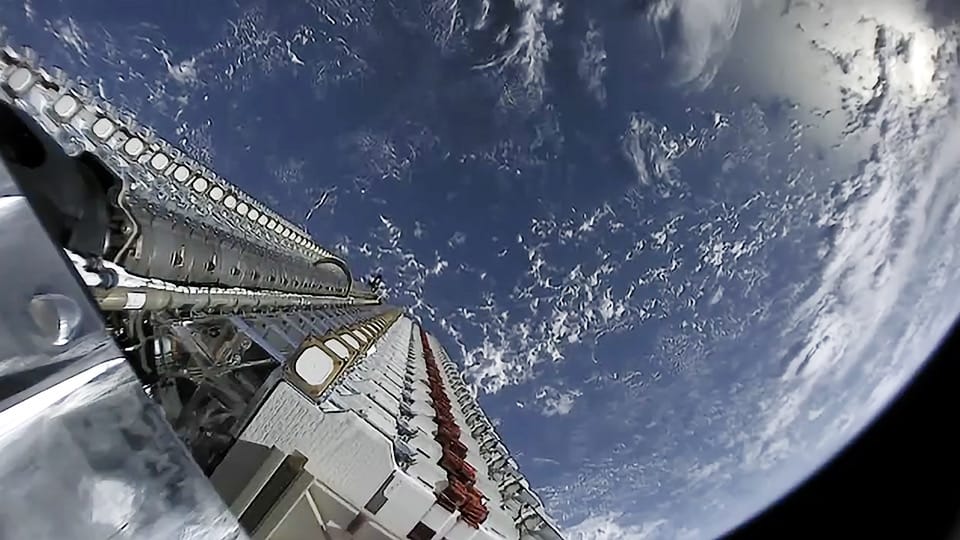Does SpaceX's Starlink make sense?
An assessment of Musk's plans to deliver internet via satellites

Accessing the internet is a fundamental part of modern life. As technology has progressed, so have the methods for delivering internet access to our devices – we have gone from the early days of dial-up to broadband, fibre optics, and five generations of cellular networks. Elon Musk’s SpaceX hopes to disrupt the internet industry by providing internet access via satellites.
Satellite internet is not a new technology – the first launch of an internet-capable satellite was in 2003, with several launches from multiple companies following in the years that have followed. These satellites have typically been launched into geosynchronous orbits, where the satellite remains in the same area of the sky above the surface of Earth. This has two main advantages; a very simple antenna can be used, and one satellite can service a very large area of the surface. The side effect of this orbit is the large distance from Earth, which limits speeds and causes any information to be delayed by around 250ms (known as latency) – this is the amount of time it takes light to travel to the satellite and back. While this does not sound like a lot, it makes many of the modern uses of the internet such as gaming and voice communications effectively impossible.
SpaceX have solved this problem by deploying many more satellites in a much lower orbit than their competitors – they have deployed over 2,400 satellites in orbits around 550km above the surface, compared to almost 36,000km for geosynchronous satellites. This lower distance allows for comparable latencies to traditional, ground-based communications such as fibre optics, and the greater number of satellites allow for a higher speed per user. SpaceX has permission to launch 12,000 satellites and have applied to launch 30,000 more.
In order for a stable connection to be maintained, any antenna must be able to track a satellite accurately. For geosynchronous satellites, this is easy – as the satellite does not move in the sky, a dish can be pointed in the right direction and left there. However, at low altitudes such as those SpaceX is using, satellites appear to move very fast across the sky. This necessitates an incredibly complex antenna capable of following the signal coming from the satellite as it moves across the sky. This is not attainable with a mechanical system – the antenna must be “steered” electronically.
This technology, known as a phased array antenna, has not been used widely outside of military purposes in the past, which leads to high costs. Despite charging users $500 for the equipment required to connect to Starlink, SpaceX is still making a loss on each user – experts estimated the manufacturing cost of the very first units to be over $3000, with updated models still costing over $1000 per unit to manufacture.
Internet in the US is often more costly and of a lower quality than in comparable countries, due to a lack of competition. As a result, in the US, Starlink is able to compete with traditional internet providers, coming at a slight premium but often with a better service. This, however, is very unlikely to translate to the rest of the world.
In the UK, the landscape is far more competitive. Venture capital-backed startups such as CityFibre compete with Virgin Media to install fast internet to households, driving down the cost for internet access. Starlink in the UK costs £89 per month, with a £529 set up fee. However, internet of a better quality can already be had for a third of this price. The numbers look even worse for SpaceX when considering developing countries. In India, for example, unlimited 4G internet costs about $3 a month - the setup cost of Starlink alone could pay for almost 14 years of internet access. As all manufacturing is conducted in the US, it is unlikely that SpaceX will be able to lower prices in areas with lower incomes by taking advantage of lower labour costs – they will have to choose between severely limiting their customer base and keeping a profit margin.
There are several niches in which Starlink is currently unbeatable – for example, when ground-based systems were destroyed, Ukrainians were able to access the internet through donated Starlink terminals. The technology also has the potential to greatly improve internet access away from land or civilisation, for example on planes and ships, and in cell towers in remote areas. Once fully deployed, the Starlink constellation could send a message over longer distances than traditional methods, as light travels faster in air than in the glass used in fibre-optic cables. This capability would be highly valued by large investment banks and hedge funds, where a slightly faster system could give their trading algorithms an edge over competitors. The military benefits of an additional redundant communications method are clear, and SpaceX has already secured a contract with the US Space Force.
SpaceX are not alone in the satellite constellation space – competition is coming in the form of OneWeb (part-owned by the UK Government) and Amazon’s Kuiper Project. It is unclear whether the niches are wide enough to sustain all three companies. SpaceX is investing over $10 billion to complete the Starlink constellation, and they are expecting revenues of over $30 billion by 2025. Even accounting for military and industrial contracts, there are a significant number of individual customers that SpaceX will need to convince to reach this goal.








